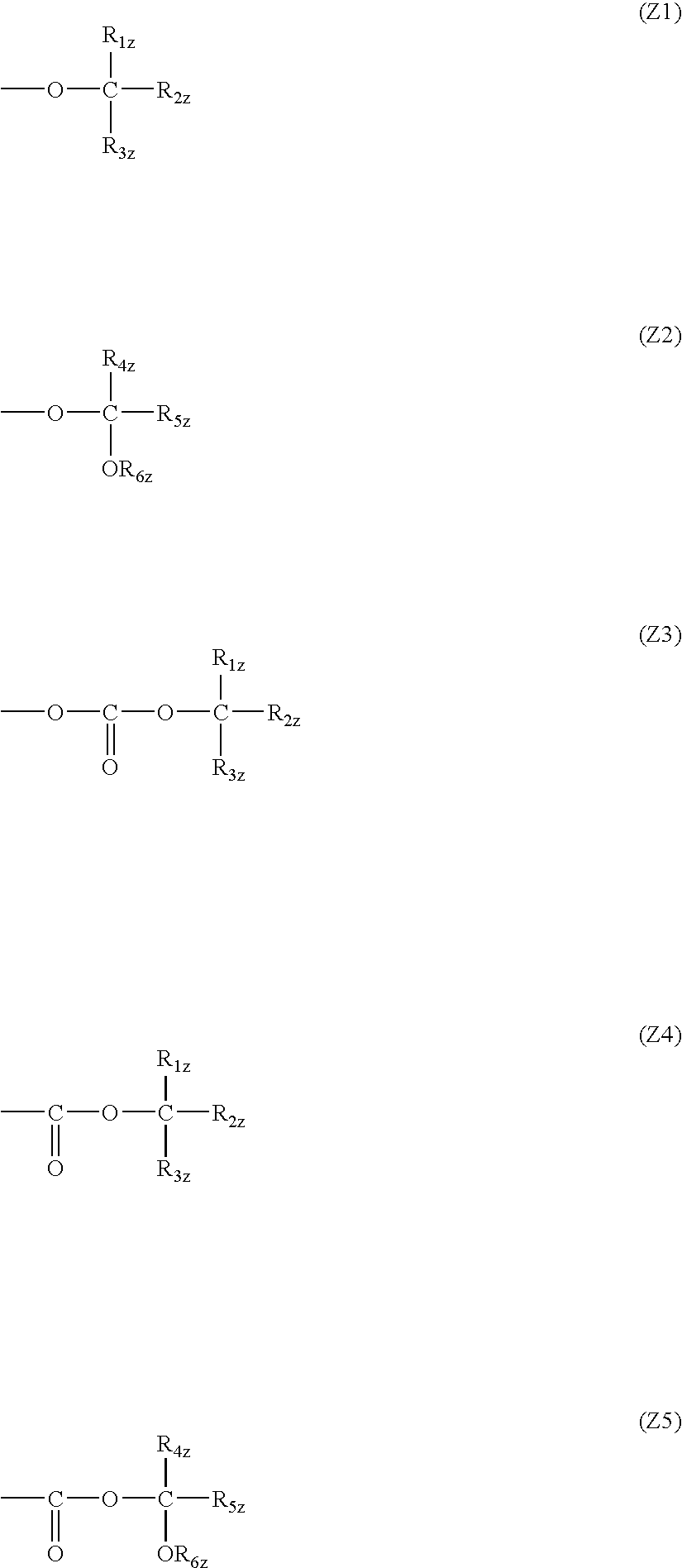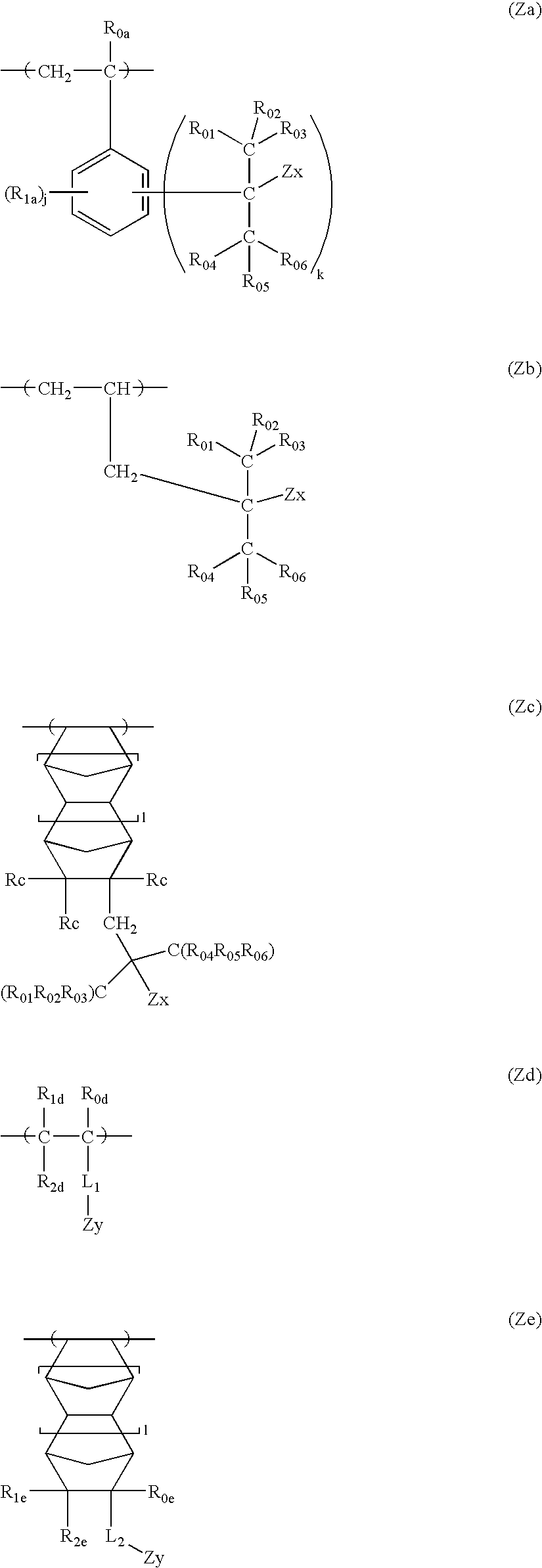Positive resist composition
a technology of composition and resist, applied in the direction of auxillary/base layers of photosensitive materials, instruments, photosensitive materials, etc., can solve the problems of insufficient defocus latitude, development defect and scum (development residue) tend to occur, and insufficient defocus latitude to achieve the desired pattern of not more than 0.1 m, etc., to achieve excellent defocus latitude and composition
- Summary
- Abstract
- Description
- Claims
- Application Information
AI Technical Summary
Benefits of technology
Problems solved by technology
Method used
Image
Examples
examples 1 to 14
AND COMPARATIVE EXAMPLES 1 TO 2, 5 TO 6 AND 10 TO 11
[Preparation of Resist Solution]
[0358]Resin (A); 1.2 g; Acid Generator-l: 0.12 mmol; Acid Generator-2: 8 μmol; Surfactant (C): 100 ppm of the resulting solution; Basic Compound (D): 10 μmol per the resulting solution in case of adding no Acid-Generator (B-b) or 1 μmol per the resulting solution in case of adding Acid-Generator (B-b); and Non-Polymer Dissolution Inhibiting Agent (X); 0.24 g were dissolved in 19.6 g of a solvent as shown in Table 2 below, and the resulting solution was filtered through a Teflon filter having a pore size of 0.1 μm to prepare a positive resist solution.
[Exposure Evaluation]
[0359]On a silicon wafer which had been coated a anti-reflective coating (DUV30J, manufactured by Brewer Science, Inc.), the positive resist solution described above was uniformly coated by a spin coater and dried by heating at 120° C. for 90 seconds to form a resist film having a thickness of 0.1 μm. The resist film was subjected to...
PUM
| Property | Measurement | Unit |
|---|---|---|
| wavelength | aaaaa | aaaaa |
| temperature | aaaaa | aaaaa |
| temperature | aaaaa | aaaaa |
Abstract
Description
Claims
Application Information
 Login to View More
Login to View More - R&D
- Intellectual Property
- Life Sciences
- Materials
- Tech Scout
- Unparalleled Data Quality
- Higher Quality Content
- 60% Fewer Hallucinations
Browse by: Latest US Patents, China's latest patents, Technical Efficacy Thesaurus, Application Domain, Technology Topic, Popular Technical Reports.
© 2025 PatSnap. All rights reserved.Legal|Privacy policy|Modern Slavery Act Transparency Statement|Sitemap|About US| Contact US: help@patsnap.com



